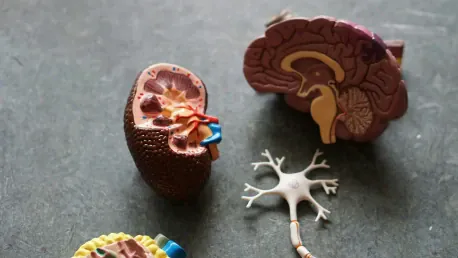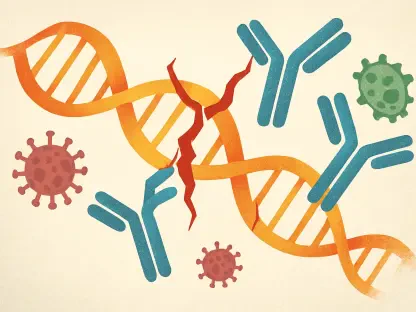Imagine understanding a part of the brain so intricate and vital that it controls many aspects of human life, from hormone regulation to emotional responses. This quest has driven researchers to the hypothalamus, a small yet essential region of the brain that continuously intrigues scientists due to its complex functions.
The Hidden Realm of the Human Hypothalamus
The human hypothalamus is a master regulator of the autonomic and endocrine systems, making it central to maintaining bodily homeostasis and regulating behaviors. Its influence extends across hormonal balance, stress response, metabolic processes, and emotional regulation. Conditions like hormonal imbalances, stress disorders, and various behavioral issues are often linked to hypothalamic functionality. Given its extensive role and the advances in neuroscientific research, understanding the hypothalamus has become a crucial frontier in brain science.
Unveiling Cellular Development During Hypothalamic Growth
A recent groundbreaking study helmed by Prof. WU Qingfeng has shed light on the cellular development and evolutionary landmarks of the hypothalamus. By employing cutting-edge methodological innovations such as single-cell analysis, single-nucleus sequencing, and spatial transcriptomics, the team has reconstructed a detailed map of hypothalamic development. These tools provided unparalleled insight into gene activity and cellular organization during the hypothalamus’s formative stages, uncovering the genetic traits that establish its structure and function.
The study marked three major contributions: innovating research methodologies, creating valuable resources for future studies, and offering new conceptual frameworks. These advances allowed for a clearer understanding of the developmental pathways and cellular differentiation within this critical brain region.
Tracing Evolutionary Divergence and Innovations
One of the pivotal discoveries of the study was the identification of human-specific neuronal subtypes. Researchers noted a significant enhancement in neuromodulation within human neurons compared to other mammals, suggesting unique evolutionary adaptations. The spatial distribution of neuroendocrine neurons, such as GnRH and GHRH, also varied distinctly between humans and mice, reflecting evolutionary divergence in supporting species-specific traits and behaviors.
Furthermore, specific variations in the chemical composition of dopamine neurons between humans and other mammals were observed. These differences in dopamine co-transmission and peptide-neurotransmitter coupling may underpin nuanced aspects of human behavior and higher-order cognitive functions.
Scholars’ Perspectives
Prof. WU Qingfeng emphasized the groundbreaking nature of these findings, noting that the study not only illuminates the cellular mechanics of hypothalamic development but also offers a new lens through which to view human neurobiology. Neuroscientists and geneticists have expressed optimism regarding the potential impact of this research on medical and therapeutic practices. They highlight the promise these findings hold for developing targeted treatments for hypothalamic-related disorders and advancing our broader understanding of brain function.
Future Horizons in Hypothalamic Research
Looking forward, the findings from this study can pave the way for innovative medical and psychological treatments. Leveraging the detailed cellular maps and genetic insights, researchers can refine therapies for conditions linked to hypothalamic dysfunction. Future research can build on these methodologies to explore other brain regions, applying the frameworks established in this study to achieve deeper insights.
To advance our understanding of hypothalamic functions and their impact on human health, practical steps involve integrating these findings into clinical research and therapeutic strategies. Continuous exploration using the advanced techniques and data generated will further elucidate the complexities of this vital brain region.
In conclusion, this study has propelled the science of hypothalamic development and evolution forward, laying the groundwork for future breakthroughs. Its identification of unique cellular and genetic markers within the hypothalamus offers transformative insights and sets the stage for continued exploration into the intricate relationship between brain development and evolution. The journey toward unraveling the mysteries of the hypothalamus remains ongoing, driven by the promise of new horizons in understanding human biology.









